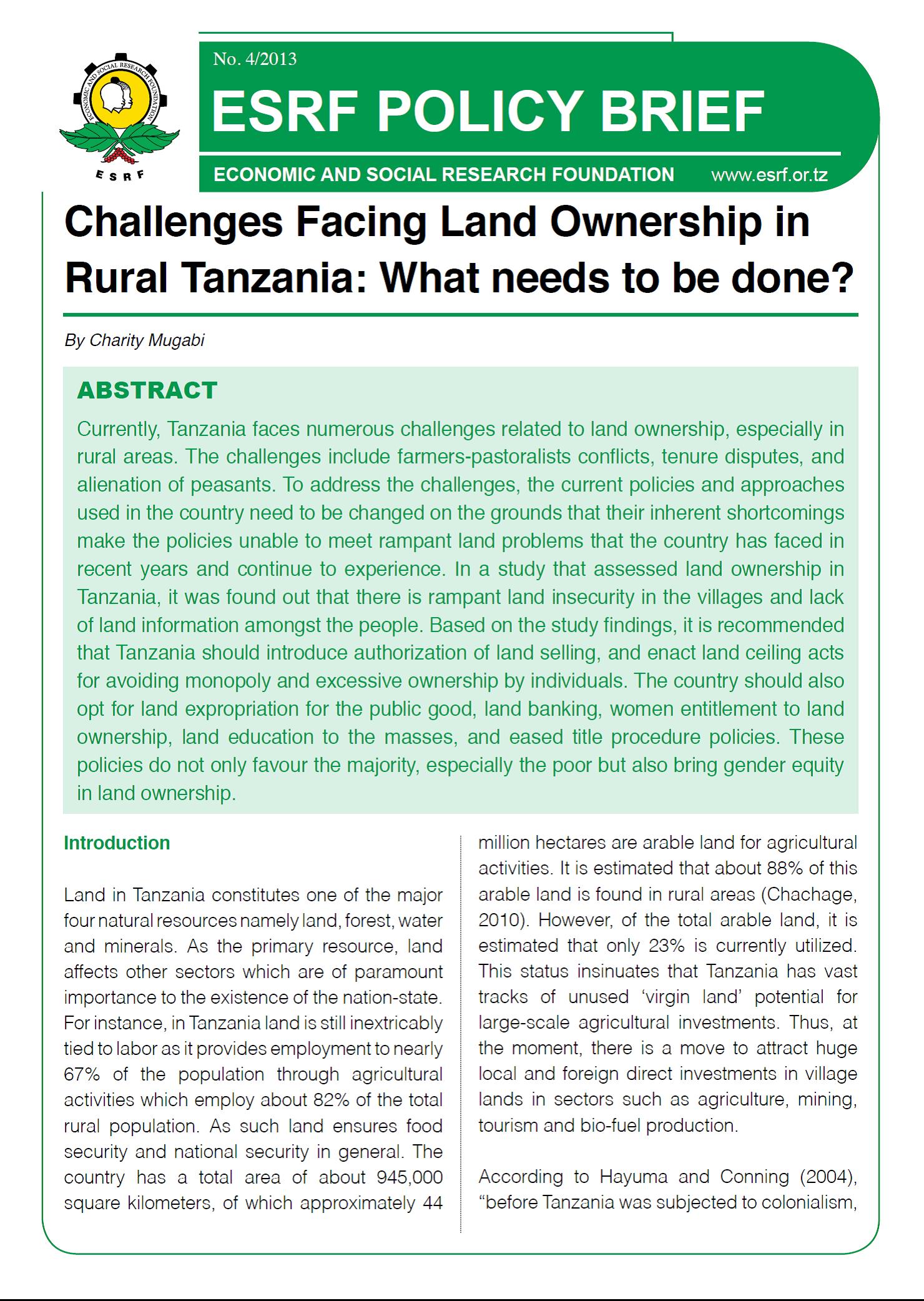Challenges Facing Land Ownership in Rural Tanzania: What needs to be done?
Currently, Tanzania faces numerous challenges related to land ownership, especially in rural areas. The challenges include farmers-pastoralists conflicts, tenure disputes, and alienation of peasants. To address the challenges, the current policies and approaches used in the country need to be changed on the grounds that their inherent shortcomings make the policies unable to meet rampant land problems that the country has faced in recent years and continue to experience.





